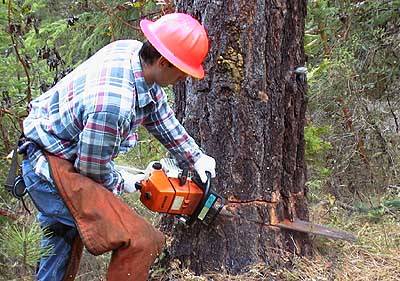As the Dilly, Dally, Delay, Stall & Bill 'Em crew have progressed.....
They focused greatly on amusing, yet unrelated matters.....
Discredit! Discredit! Discredit! #3 MR. ALBANY TOYOTA and TIMBER TRUST PASS
The Dynamic Duo of Dilly Dan [Attorney Dan Viera] ....
...and Albany Rose [Attorney Keith Rose, TOYOTA'S SOCK PUPPET] traveling from Albany for each brief encounter.....
...milking the TOYOTA CASH COW.....
...someone aware of the TOYOTA FOLLIES sent this.....
Check Before You Cut! Massachusetts Illegal Tree Cutting Carries Substantial Civil Penalties

Triple Damage Penalty for Willful Cutting Of Neighbor’s Trees
Neighbors typically get really mad when you chop down their trees. Really mad….and it can get the guy with the chainsaw into a lot of legal trouble. Can you say “triple damages”?
First enacted in 1698, the Massachusetts illegal tree cutting law (General Laws chapter 242, section 7) provides for up to triple damages for the malicious cutting, trimming, or destroying of another’s trees:
A person who without license willfully cuts down, carries away, girdles or otherwise destroys trees, timber, wood or underwood on the land of another shall be liable to the owner in tort for three times the amount of the damages assessed therefor; but if it is found that the defendant had good reason to believe that the land on which the trespass was committed was his own or that he was otherwise lawfully authorized to do the acts complained of, he shall be liable for single damages only.That said, I always advise property owners who intend to cut trees near boundary lines to consult a survey or plot plan to ensure that the trees are not on their neighbor’s land.
Measure of Damages: Restoration Cost Value
The measure of damages for those harmed by the willful cutting of trees varies from case to case. The most common measure of damages is either the value of the timber cut, restoration cost, or the resulting diminution in value of the property. A claimant is entitled to assert a claim for either value, whichever is highest.
Where the trees cut are tall, hard to replace or have a particular function like screening, or all the above, it is wise to engage a certified arborist to perform a comprehensive restoration cost analysis. The restoration cost analysis takes into account the aesthetics, functionality, age, height, girth, and species of the trees, and formulates a restoration value for the replacement of the removed trees. The method, known as cost-of-cure, involves determining the cost of planting trees and the estimated time for the replacement trees to grow to the size of the destroyed trees (years to parity).
In recent cases, Land Court judges have awarded $30,000 (tripled) for the cutting of 10 mature oak trees and nearly $45,000 (tripled) for the clearing of an 800 square foot woodland area which provided privacy screening. In both of these cases, expert arborist testimony was offered on the restoration cost of the cut trees. And who can forget the case where a Somerset family recovered a $150,000 wrongful death settlement after a women dropped dead after her neighbor wrongfully cut down a swath of sentimental trees.
Branches Over The Property Line
Under Massachusetts common law, you may remove branches of a neighbor’s tree extending over your property line as long as you don’t kill or damage the tree. Also, the neighbor has no liability for roots growing into your yard and causing damage. Massachusetts law does not allow a person to cross or enter a neighbor’s property for these purposes without the neighbor’s consent, nor to remove any branches or other vegetation within the confines of the neighbor’s property. This is the “Massachusetts Rule.”
Utility Tree Cutting
I’ve been reading about many recent disputes between property owners and utility companies (Wayland v. NStar) over tree cutting within utility easements. The law provides a public utility the right to remove or trim your tree if it interferes with the necessary and reasonable operation of the utility. Furthermore, the utility is required to perform tree trimming as part of its program to maintain reliable service for its customers. The National Electric Safety Code requires utilities to trim or remove trees growing near power lines that threaten to disrupt service. Proper and regular tree trimming helps prevent the danger and inconvenience of outages.
Lastly, landscapers and tree cutting companies should get a signed directive from the homeowners and an indemnification prior to cutting trees, as my fellow real estate attorney Chris McHallam points out.
If your trees have been wrongfully removed by a neighbor or if you have mistakenly removed trees, you should consult an experienced Massachusetts property law attorney. Valuation of trees is a science, rather complicated, and best left to the professionals.
___________________________________________
 Richard D. Vetstein, Esq. is an experienced Massachusetts real estate attorney who has handled numerous illegal tree cutting and boundary line disputes. Please contact him at info@vetsteinlawgroup.com or 508.620.5352.
Richard D. Vetstein, Esq. is an experienced Massachusetts real estate attorney who has handled numerous illegal tree cutting and boundary line disputes. Please contact him at info@vetsteinlawgroup.com or 508.620.5352.http://massrealestatelawblog.com/2013/01/27/check-before-you-cut-massachusetts-illegal-tree-cutting-carries-substantial-civil-penalties/
.jpg)




No comments:
Post a Comment